Unlocking the secrets of your attic’s ventilation
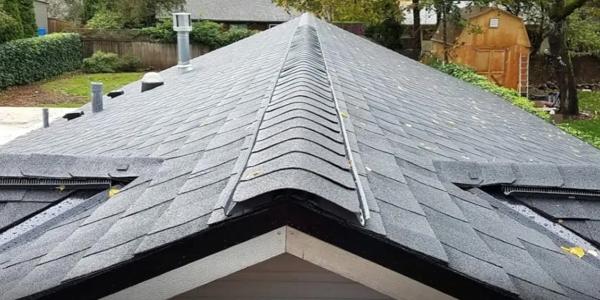
By Pacific West Roofing.
Learn how to make your home more energy efficient and structurally secure by making sure your attic has proper ventilation.
Your home’s attic is more than just a place to tuck away old boxes, it’s an important part of your home’s environmental temperature regulation. You probably have noticed that it is typically a different temperature from the rest of the home, which is good! Depending on the time of year, the attic should either be cooler or warmer than the rest of the house. But no matter the season, the air should feel dry. If it feels damp or moist up there, it might be time to rethink your attic ventilation system.
The technicians here at Pacific West Roofing are well-versed in identifying the components of a balanced ventilation system and what might be compromising that system. Small damage to vents or broken caulk seals can risk developing into major leaks and problems if they are not spotted early enough. Keep reading to learn why it’s so important to make sure you have a balanced ventilation system.
Why balanced attic ventilation matters
The ventilation system in your attic is meant to regulate the temperature and the humidity level (moisture) in your attic. And while temperatures may vary through the season, properly balanced ventilation will ensure both optimal temperature and humidity levels and will prevent condensation and mold.
The benefits of properly balanced attic ventilation:
- Prevents excessive heat in your attic, which can lead to the plywood in your roof deck (the attic ceiling) delaminating and causing your roof shingles to degrade faster. An attic that is too warm in the winter may also cause faster snow melt and ice dams that can lead to leaks or gutter damage.
- Prevents excessive humidity and moisture that will create the perfect environment in your attic for mold, mildew and rot, which can damage a roof and shorten its life span.
- Keeps energy costs down by regulating the temperature in your attic. The constant flow provided by the intake and exhaust vents prevents your attic from ever becoming too hot. In the heat of summer, this means your air conditioner is not going to work as hard to keep your house cool.
- Prevents thermal cycling, the hot and cold contractions that weaken roof material — shingles, sheeting, plywood — and cause them to degrade more quickly.
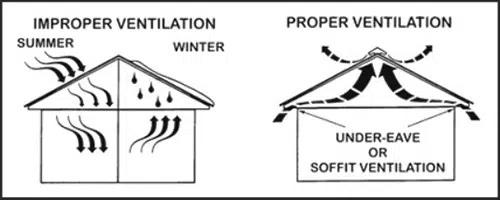
Attic intake and exhaust vents
Proper attic ventilation includes both intake and exhaust vents, which work in concert to pull air into, through and back out again, providing continual airflow. Intake vents should be located at the lowest point in your attic to allow cooler outside air to flow in. Conversely, exhaust vents should be positioned at the highest points so rising hot air and damp air can escape. Depending on the size and configuration of your attic and roof, different types of attic vents are necessary.
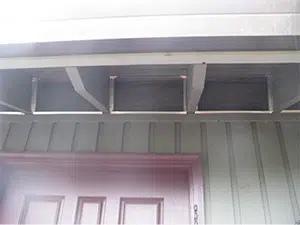
Intake vents
- Soffit venting. The soffit is the part of your roof overhang that meets your siding and is the lowest point in your attic. Soffit vents come in two types — rectangular and continuous — and are intake vents that work to draw cooler fresh outside air into your attic.
- Rectangular soffit vents are holes that have been cut into the blocking between the rafters of your roof. The holes are covered with a screen or vent cover, which allows air to flow through but prevents birds and insects from entering your attic, depending on the size of the vent or screen openings.
- Continuous soffit vents run along the full length of your home’s closed soffit and incorporate a perforated material or wire screen that allows continual airflow into your attic at the lowest point. This type of venting can only be installed in closed soffits where the roof rafters are not visible.
- Gable vents, which may be positioned on the exterior wall of an attic, allow air to flow in or out but generally do not help even airflow throughout the attic.
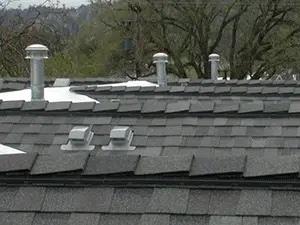
Exhaust vents
- Roof venting allows rising hot air and moisture to escape from your attic, preventing heat build-up and condensation, depending on the season. There are two primary types of residential roof vents: Box Vents and Ridge Vents.
- Ridge vents are attic exhaust vents installed along the peak of your roof. As they are positioned at the highest point, ridge vents are extremely efficient at allowing hot or damp air to escape. Continuous ridge vents also help create a bit of a vacuum that enables the desired air circulation. This type of attic exhaust venting is visually appealing as it blends well into the roofline.
- Box vents are another common attic exhaust vent positioned near the top of the roof to provide an outlet for warm air. These vents are comprised of a hole that has been cut into the roof and essentially a box covering the opening.
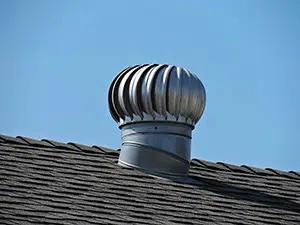
- Turbine vents, although not as common on residential roofs, are another type of passive (non-powered) exhaust vent. Rising heat in the attic causes the turbine vents to rotate, creating a drawing effect that pulls air through the attic.
Attic fans
A properly installed attic ventilation system with the optimum number of intake and exhaust vents results in a highly efficient passive system that does not require any electricity or power to run. Most homes are constructed with passive attic venting comprised of intake and exhaust vents.
Attic ventilation fans are sometimes installed to aid in air circulation and may help the energy efficiency of a home’s HVAC system. Attic fans are typically installed on the attic ceiling (to help circulate and draw warm air up) or gable (to help draw cooler air in or push warm air out).
Attic thermostats and humidistats
Power attic fans will often have a dual thermostat and humidistat to measure the temperature and the humidity in the attic and automatically adjust the fan to maintain optimal levels. This automatic control can help improve the performance of the home’s heating and air conditioning system as well as mitigate condensation and delamination of plywood.
Attic ventilation installation and maintenance
While the best time to install an attic ventilation system is at the time of a new roof installation or roof replacement, ventilation can be modified with additional venting later on if necessary. Old or damaged roof vents should be repaired or replaced to prevent leaks or other damage to the roof.
You can do a quick visual assessment simply by walking around the exterior of your home to determine the number and type of vents your home has, but this will not tell you if the ventilation is balanced or working as it should. Touching the ceiling of any room immediately below your attic can help determine if the attic is too hot (the ceiling should not feel warm). You can also do a visual check for moisture and signs of mold or rot in your attic. But the best way to know if your attic is properly vented and that all vents are in good condition is to have your roof and attic inspected by a professional roofing contractor.
Original article source: Pacific West Roofing
Have a question? AskARoofer.
Find your local roofing contractor in the AskARoofer™ Contractor Directory.




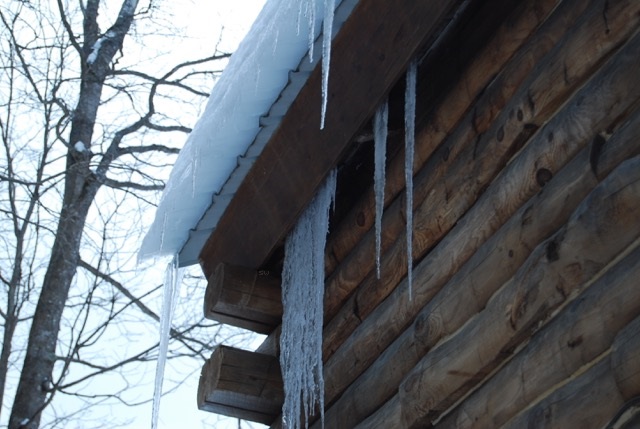

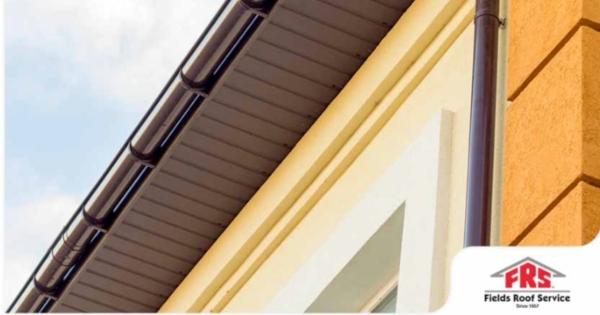






Comments
Leave a Reply
Have an account? Login to leave a comment!
Sign In